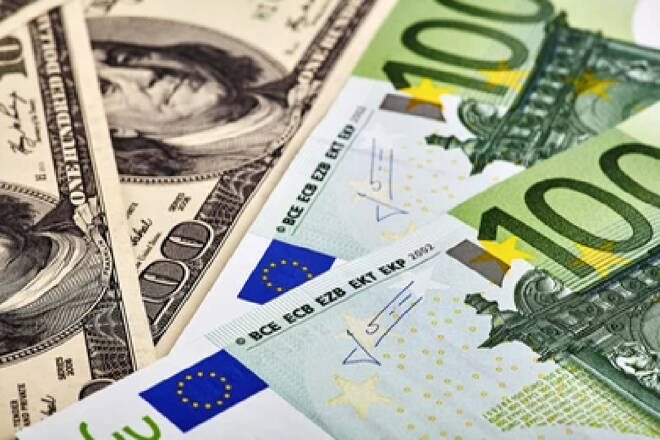Advertisement
Advertisement
EUR/USD Forecast: Can German Exports Boost the Euro Amid the ECB’s Watch?
By:
German trade data and ECB insights take center stage, shaping EUR to USD forecasts. US factory orders also need consideration.
Highlights
- The EUR/USD slipped by 0.06% on Friday, ending the session at $1.08789.
- Fed Chair Powell offered late support to leave the EUR/USD with modest losses.
- German trade data, ECB commentary, and US factory orders are focal points for Monday.
Friday Overview
The EUR/USD slipped by 0.06% on Friday. Following a 0.77% loss on Thursday, the EUR/USD ended the day at $1.08789. The EUR/USD rose to a high of $1.09127 before falling to a low of $1.08286.
German Trade Data and ECB President Lagarde in the Spotlight
On Monday, German trade data will draw investor interest. After an upward revision to the German Manufacturing PMI, better-than-expected trade terms could ease fears of a prolonged recession.
Economists forecast the German trade surplus to widen from €16.5 billion to €17.1 billion in October. Significantly, economists predict exports to increase by 1.1% versus a 2.4% decline in September.
An improving demand environment would support German manufacturers and service providers. However, increased demand could fuel demand-driven inflation and the need for a higher-for-longer ECB rate path.
With the German economy in the spotlight, ECB commentary warrants investor attention. ECB President Christine Lagarde is on the calendar to speak. ECB Executive Board members Luis de Guindos and Frank Elderson will also deliver speeches.
Comments favoring H1 2024 rate cuts would impact buyer demand for the EUR/USD.
US Factory Orders in Focus
On Monday, US factory orders also need consideration. A larger-than-expected fall in factory orders could drive investor bets on a Q1 2024 Fed rate cut. In November, the ISM Manufacturing PMI revealed a more marked contraction across the US manufacturing sector.
Although the US manufacturing sector represents less than 30% of the economy, early signs of weakness could push the Fed to consider rate cuts to prevent a hard landing.
Economists forecast factory orders to fall by 2.6%. In September, factory orders jumped by 2.8%.
Beyond the numbers, FOMC member commentary would also move the dial. Dovish comments would impact buyer appetite for the US dollar.
Short-Term Forecast:
Near-term trends for the EUR/USD will hinge on Services PMIs and the US Jobs Report. Weaker-than-expected US ISM Non-Manufacturing PMI numbers and softer wage growth would raise bets on a Q1 2024 Fed rate cut. In contrast, improving euro area macroeconomic indicators could allow the ECB to hold rates unchanged until Q2 2024.
EUR/USD Price Action
Daily Chart
The EUR/USD held above the 50-day and 200-day EMAs, affirming bullish price signals.
A EUR/USD move through the $1.09294 resistance level would give the bulls a run at $1.10 and the $1.10720 resistance level.
German trade data, US factory orders, and central bank speakers will be in focus.
However, a EUR/USD fall through the $1.08500 handle would bring the $1.07838 support level into play.
The 14-period Daily RSI, 57.08, suggests a EUR/USD return to $1.10 before entering overbought territory.
4-Hour Chart
The EUR/USD remained below the 50-day EMA while sitting above the 200-day EMA, affirming bearish near-term but bullish longer-term price signals.
A EUR/USD move through the 50-day EMA and the $1.09294 resistance level would support a return to $1.10.
However, a EUR/USD fall to the $1.08500 handle would give the bears a run at the 200-day EMA and the $1.07838 support level.
The 14-period RSI on the 4-hour chart, 38.34, suggests a EUR/USD drop to the $1.08500 handle before entering oversold territory.
About the Author
Bob Masonauthor
With over 28 years of experience in the financial industry, Bob has worked with various global rating agencies and multinational banks. Currently he is covering currencies, commodities, alternative asset classes and global equities, focusing mostly on European and Asian markets.
Advertisement
